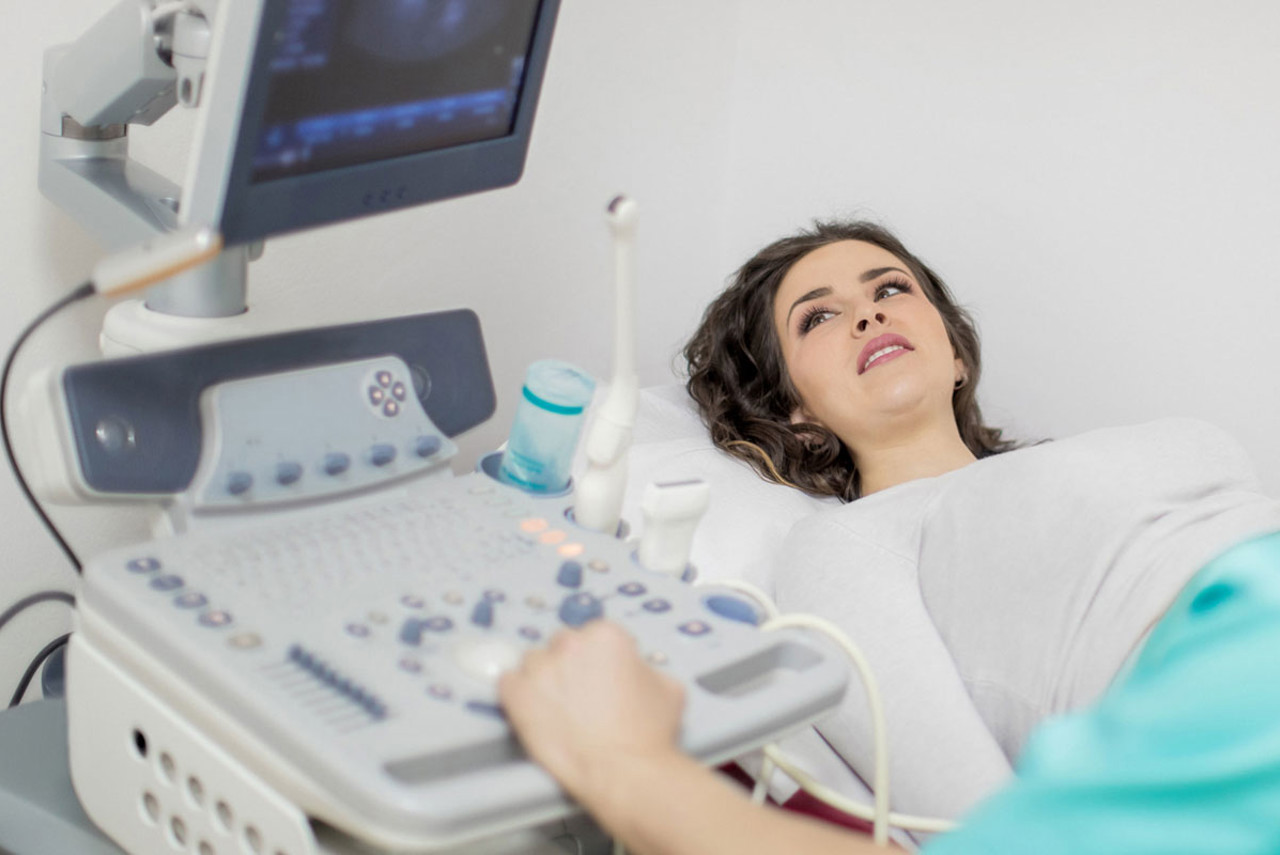Transvaginal Ultrasound FAQs
-
Transvaginal ultrasounds are often required for pelvic examination as they offer detailed information about your pelvic organs.
A transvaginal ultrasound is often used together with a transabdominal ultrasound, which is done over your abdomen. Together, these scans can help us investigate issues such as pelvic pain, unusual bleeding, or check your pregnancy.
A transvaginal ultrasound provides a more detailed view of your pelvic organs than an abdominal scan because the probe is closer to the organs. It uses sound waves to create images, and the closer the probe is positioned to the area being examined, the clearer the picture.
A transvaginal ultrasound can help identify cysts, tumours, fibroids, polyps, check if an intrauterine device (IUD) is in the right position, and look for signs of cancer, ectopic pregnancy, miscarriage, or infection.
During pregnancy, especially in the first few months, this scan can confirm pregnancy, estimate how far along you are, check your baby’s heartbeat, and detect early abnormalities.
-
Please follow any instructions given to you at the time of booking carefully and thoroughly.
We recommend you wear a separate top to bottoms during your appointment as this makes changing for the examination easier.
If you require both a transabdominal and a transvaginal examination, a full bladder is required for the transabdominal scan. Please drink 500ml of water one hour before your appointment and try not to empty your bladder. If you experience difficulty holding your bladder, please mention this at the time of booking.
A full bladder is only required for a transabdominal scan; before the transvaginal scan, you will be able to empty your bladder.
-
At the start of your appointment, your sonographer will explain exactly what will happen during your procedure. It may vary slightly from what we describe below, so don’t worry if this is the case; you’ll always be in very good hands
You will need to fill out a short questionnaire and sign a consent form before the scan. If you have any questions, you will be able to ask your sonographer.
You will be asked to remove your clothes from the waist down. If you’re on your period, you will be able to go to the bathroom to remove any internal menstrual product.
Once ready, you will lie down on a bed. A small “sheet” will be provided to cover your lower pelvic region.
The sonographer will provide instructions on how to position yourself on the bed. They will do their best to make you feel comfortable.
The transducer (probe) is covered with a disposable sheath, and a warm lubricant is applied. If you are allergic to latex, let us know so we can use a latex-free cover.
Usually, you will be asked to gently insert the transducer into your vagina, with assistance from your sonographer. The insertion of the transducer is similar to that of a vaginal speculum used during a pap smear.
Once the transducer is in position, the sonographer will gently move it to image the pelvic organs. Only a small portion of the probe is inserted. The transducer’s long handle allows the sonographer to grasp it easily.
Most women experience little or no pain, though some may feel mild discomfort.
-
All Queensland X-Ray ultrasounds are performed by sonographers who are highly trained and accredited professionals. Our quality team consist of male and female sonographers who are qualified to perform all ultrasound imaging examinations.
Watch: Having a Transvaginal Ultrasound with Queensland X-Ray
How much will it cost?
Fees for radiology procedures will vary depending on a variety of factors. We will advise you about the cost of your service at the time of booking but if you do have any questions, contact us and one of our team will be happy to help with your query. You can read more about our billing information here.
How do I access my images?
At Queensland X-Ray, we provide our patients with their images and results online. To access your images and results, you’ll need to register for an account when you visit one of our practices. If you’ve already registered, you can access the Patient Portal here.

